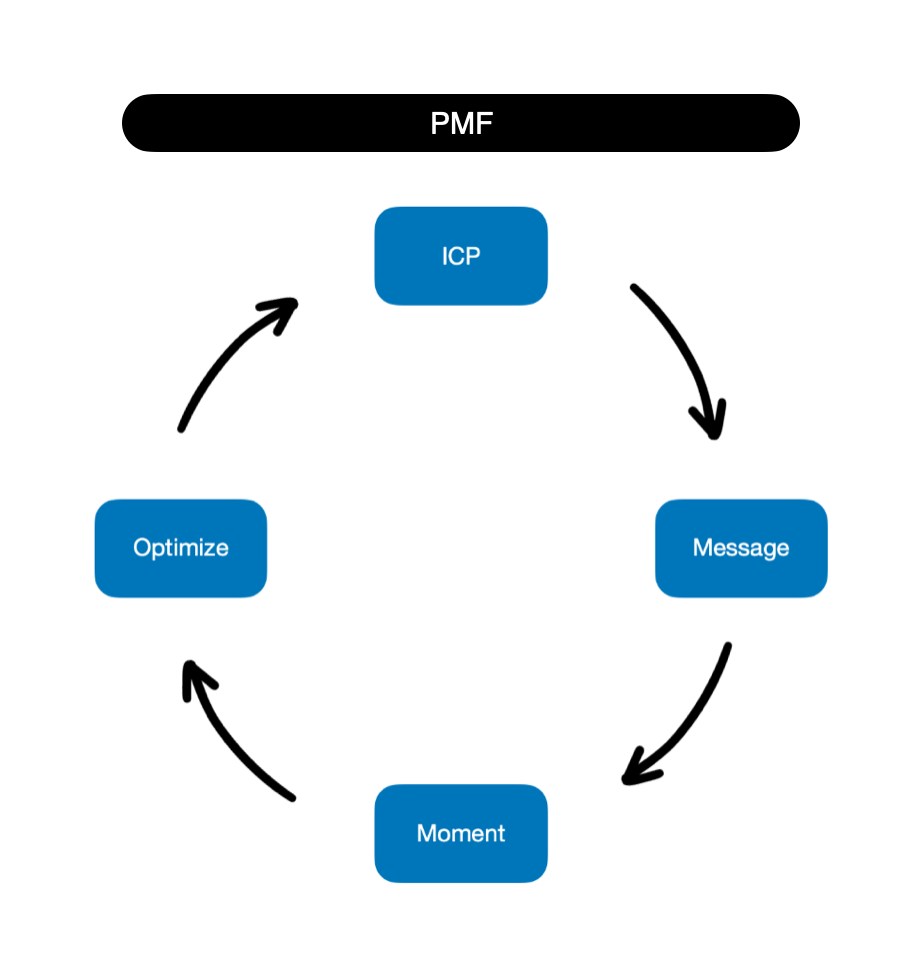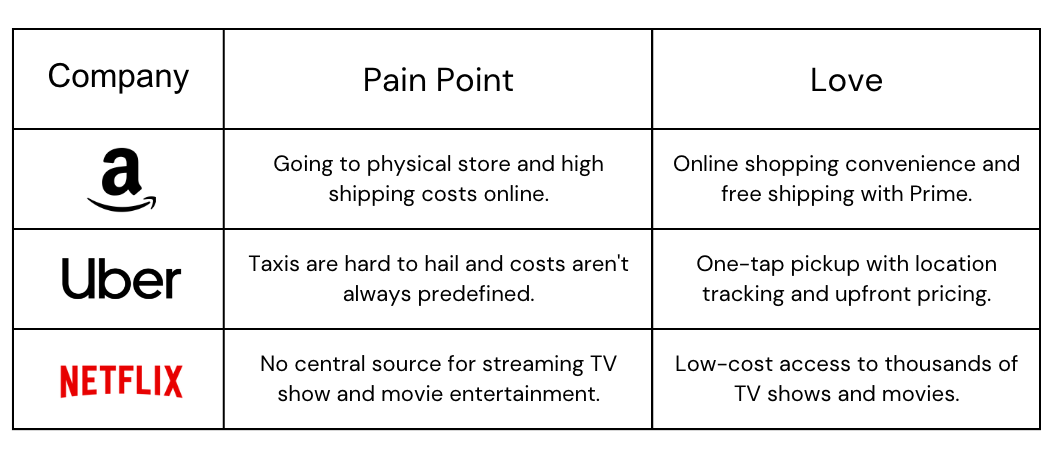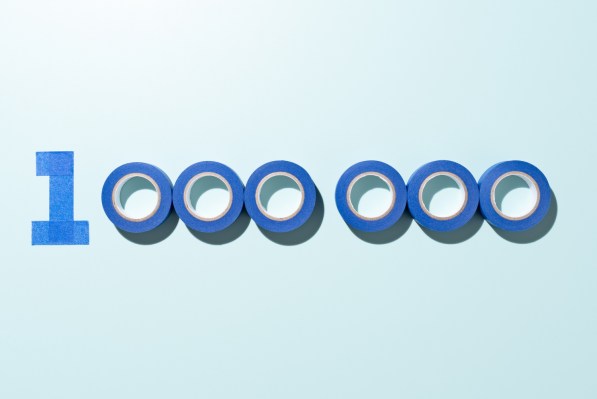There are hundreds of guides on how to scale a startup, but many authors either haven’t done it themselves or are too forward-looking into the millions. So, how does a founder implement a growth framework to scale to the first million dollars in revenue?
After working at hyper-growth companies such as Postmates and Coinbase, I wanted to try my hand at the accelerated growth of my own startup. I’ve been fortunate enough to have co-founded Virtualis, where I have led all marketing efforts as our CMO, from zero to $1 million annual recurring revenue (ARR) in our first year.
I’m here to share the framework that I implemented, which I believe can apply to all startups just entering the market. I do not pretend to have a silver bullet, but I do have a tried-and-true framework you can use to help you achieve your first million.
The core components to my early-stage startup growth framework are finding product market fit (PMF), identifying your ideal customer profiles (ICP), nailing down messaging, pushing users to their “aha moment” and finally optimizing for down-funnel metrics.
Introducing my battle-tested startup framework: First Million Startup Growth Framework.

First Million Startup Growth Framework. Image Credits: Jonathan Martinez
If you’re either just starting out with your newly created startup or struggling to get to your first million in revenue, this is the early-stage framework for you. Let’s dive in!
Finding product-market fit
PMF is a term used to describe a product or service that has found enough organic demand from consumers. This demand is both sustainable and economically worthwhile for a startup to continue operating. So how can you find PMF in the most efficient and frictionless way possible? I believe that the answer to this question is through paid acquisition.
There are 100s of guides on how to scale a startup, but many authors either haven’t done it themselves or are too forward-looking into the millions.
With a paid acquisition channel like Meta or Google, you can launch a campaign to assess whether consumers are genuinely interested in your startup’s offering in an expeditious manner. It is important to understand that paid campaigns are not the most efficient on day one and take both experience and optimizing to drive costs down.
However, it should be obvious if there is an interest with your startup based on the initial cost per leads (CPL). If you’ve spent $1,000 and have no purchases, or even signups for a waitlist, then the campaign may not be configured correctly or there’s an issue with PMF. Below are some rough gauges to determine PMF, outside of purely looking at metrics:
- Are consumers looking to learn more?
- Are consumers expressing excitement?
Make sure you avoid filtered responses from family and friends who are protecting your feelings when finding PMF. It’s inevitable and another large reason why you should seek out opinions from outlets like paid acquisition, where you have no preexisting affiliation with the users seeing your idea.
Identifying your ideal customer profile
I’ve written an entire article on how to most efficiently find your ideal customer profile, but I’ll provide a distilled how-to guide below. Many startups make the mistake of not identifying who their ideal customer is early enough, which concurrently leads to higher acquisition costs and churn.
How do you identify your startup’s ICP?
- Ask each of your customers a set of defined questions to understand them better.
- Identify your top performing customers (based on retention).
- Target and acquire more customers based on the top performing customers’ criteria.
These are some example questions that you can use when interviewing customers:
- What is your age range and gender identity?
- What are you currently using to solve this problem?
- What is your biggest challenge related to X problem?
Once you have your ICP identified, the next step is to nail down the messaging that will be used across all of your marketing collateral.
Nail down your messaging
Imagine a postal service knowing their mail routes but delivering mail without any contents inside the envelopes. This is what it would be like to have an ICP defined but missing the correct messaging to target your potential customers with.
Every growth medium begins with messaging at its core, which makes nailing messaging so crucial. Here are two key questions to ask yourself to ideate on messaging:
- What key pain points are we solving for our customers?
- What do our customers love most about our products or services?
The most rapid method for testing various forms of messaging is through AB testing tools, such as Google Optimize or Optimizely. These tools allow you to test various headlines and images very quickly on a website landing page. Out of all the available options for testing messaging, I typically recommend a website because of the tooling available and the ability to drive large traffic there via paid acquisition channels.

Well-known startups’ pain points and love. Image Credits: Jonathan Martinez
In this chart, companies such as Amazon can easily craft messaging based on the simple exercise of discovering why customers return. If you know what your startup is solving and what customers love the most about your solution, the copy for marketing collateral (i.e., for ads) will come naturally.
Your “aha moment”
Many of the world-famous startups of today are world-famous because they found their “aha moment” and capitalized on it. An aha moment is the moment users find value in your product or service, and thus become sticky. Facebook famously found that they needed to get users to 10 friends in seven days for them to stick on the platform. Twitter found that they needed its users to follow at least 30 other accounts with one-third of those following them back.
To find this coveted moment in your users’ journey for your startup, it takes slicing your data in hundreds of cuts. Which features or attributes are causing users to retain versus those that aren’t? Ask yourself these three questions to arrive at the answer on your aha moment:
- Which users are retaining and why?
- Which users are churning and why?
- What are the common denominators for both groups?
These questions should lead you to slicing your data in various ways to then be able to successfully analyze the behaviors of your users. I would highly recommend leveraging a business intelligence tool such as Amplitude to ensure these analyses are conducted much more efficiently. It’s also important to note that Facebook could have found even stickier users who had added 20 friends in seven days, but that would have eliminated a large segment of their potential user base. This is why you need to identify an action that widens the area of intersection between those actions taken and the number of users retained.
Optimizing down-funnel
Everything toward scaling to your first million leads to optimizing to acquire more, such as your most valuable set of customers. Oftentimes, I will see many startups spinning their wheels, continuing to optimize for upper-funnel metrics, such as cost per lead (CPL) instead of something more substantive, like lifetime value (LTV). At my startup, we optimized for upper-funnel metrics too long as we became content with amazing CPLs, leaving us wide open and vulnerable to churning clients.
Even though we thought we knew our ICP, we had to continue refining the attributes, such as company revenue and industry, so that we could bring in higher LTV clients.
There’s no specific time when a startup should begin monitoring more down-funnel metrics, but a great gauge is if you have high churn. This typically means that while you may have great upper-funnel metrics such as CPL, you aren’t optimizing correctly, as customers are dropping. It’s like putting the correct premium oil in a car but having a hole at the bottom of the tank.
The mechanic has optimized for great oil, but there’ll be effects on the car with no optimization on the longer-term health of the car.
Most startups should go through the five-step cycle I’ve outlined here various times if there are high amounts of churn. When advising for earlier-stage startups, I’ve had to steer us in the direction of rinsing and repeating with this style framework, until there’s substantial progress on revenue growth.
By following this framework at the start of your new business, you’ll gain learnings more rapidly, while also avoiding numerous common startup pitfalls.
